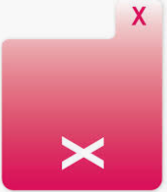
Well , it’s time for the old season to close and to look forward to the New Year !!
We start back on the 24th of September for our Tuesday “Tutored Tables” , then on the 25th we start our Beginners Lessons.
Both start at 7pm
Come and join us

Bridge for All

Well , it’s time for the old season to close and to look forward to the New Year !!
We start back on the 24th of September for our Tuesday “Tutored Tables” , then on the 25th we start our Beginners Lessons.
Both start at 7pm
Come and join us
The use of “doubles” is part of the arsenal of Modern ACOL Bridge and makes up part of the toolset of “Competative Bidding”
Brian K

After the last positive,”real”, bid has been made , 1C through to 7NT, a person on the opposite side may double. Simplistically this will then mean that if the contract is defeated then the penalties will be higher.
Conversely if the contract is made then the scores for the side making the contract will be higher.
Historically, this “simple” use of Double was for penalties only. Modern day Bridge uses the double , at lower levels mainly, to signify other things.
Modern ACOL :-
1. PENALTY DOUBLE
The next use of “double” can be said to show:-
“Partner, the opposition has taken my bid, please take some action”
2. TAKE OUT DOUBLE
The opposition have opened , say 1D , and you have 12 points or more and are short in Diamonds. You can then double , this tells your partner – “Partner I have opening points and will play in any suit other than Diamonds , please call back your longest and strongest suit”.
| HCP | Response to Double |
|---|---|
| 0 - 8 | Respond at the lowest level possible (even with zero) |
| 9-12 | Jump respond |
| 13+ | Cue bid their suit |
| 13+ | 3NT |
| 10-12 | 2NT |
| 6 - 9 | 1NT |
| With a Stopper in their suit |
N.B.
If the opposition opens the bidding by pre-empting (at the 3 or 4 level , a double after this is for take out, ie we have the balance of points and are likely to make game.
3. NEGATIVE DOUBLE
This is also called the “Informative Double” .
If partner has opened say 1D and before you could bid your hearts they bid 1 Spade. It may be that you don’t have 10 points and therefore cannot bid at the two level.
“Your Bid has been pinched !!”.
So by just doubling their bid, you can inform partner that you have a few point to offer
Again it is for takeout and should not be passed, unless the opposition have bid on.
The hand shape 4441 is a “problem chile” you need to understand what to bid , but the shape comes up only 2% of all hands !! Examples are below
| Suit | Hand 1 | Hand 2 | Hand 3 | Hand 4 | Hand 5 |
| ♠️ | AK97 | AK97 | AK97 | 8 | AQJ8 |
| ♥️ | KJ92 | KJ92 | 8 | AK97 | 9 |
♦️ | K863 | 8 | KJ92 | Kj92 | kJ92 |
♣️ | 8 | K863 | K863 | K863 | AJ63 |
| Open 1 | ♥️ | ♣️ | ♣️ | ♦️ | ♣️ |
1NT followed by partner bidding 2D or 2H is a “Red” transfer to the next major up from the one bid.
Continue reading “Transfers Crib Sheet”During the Auction phase of a Bridge game, both sides are bidding so as to obtain the Contract. Bidding determines how many tricks you need to make and in what “strain” (Suit or NT).
Continue reading “Bidding”Once you have determined the shape of your hand , added up your HCP , ascertained your partner’s HCP , you then have the total HCP for the partnership. At that stage the following table gives you an “idea’ of how many tricks you can take :-
Continue reading “Points for Tricks”To determine the strength of your hand at Bridge you look , initially, at two things ; a) Hand Pattern / Shape and b) the number of High Card Points (HCP) in the hand.
Continue reading “Hand Shapes”Within the game of Bridge itself there are only 15 words that can be used for bidding :-
Continue reading “A New Language”Bridge is a simple game split into 4 phases :-
Continue reading “Mechanics of Bridge”